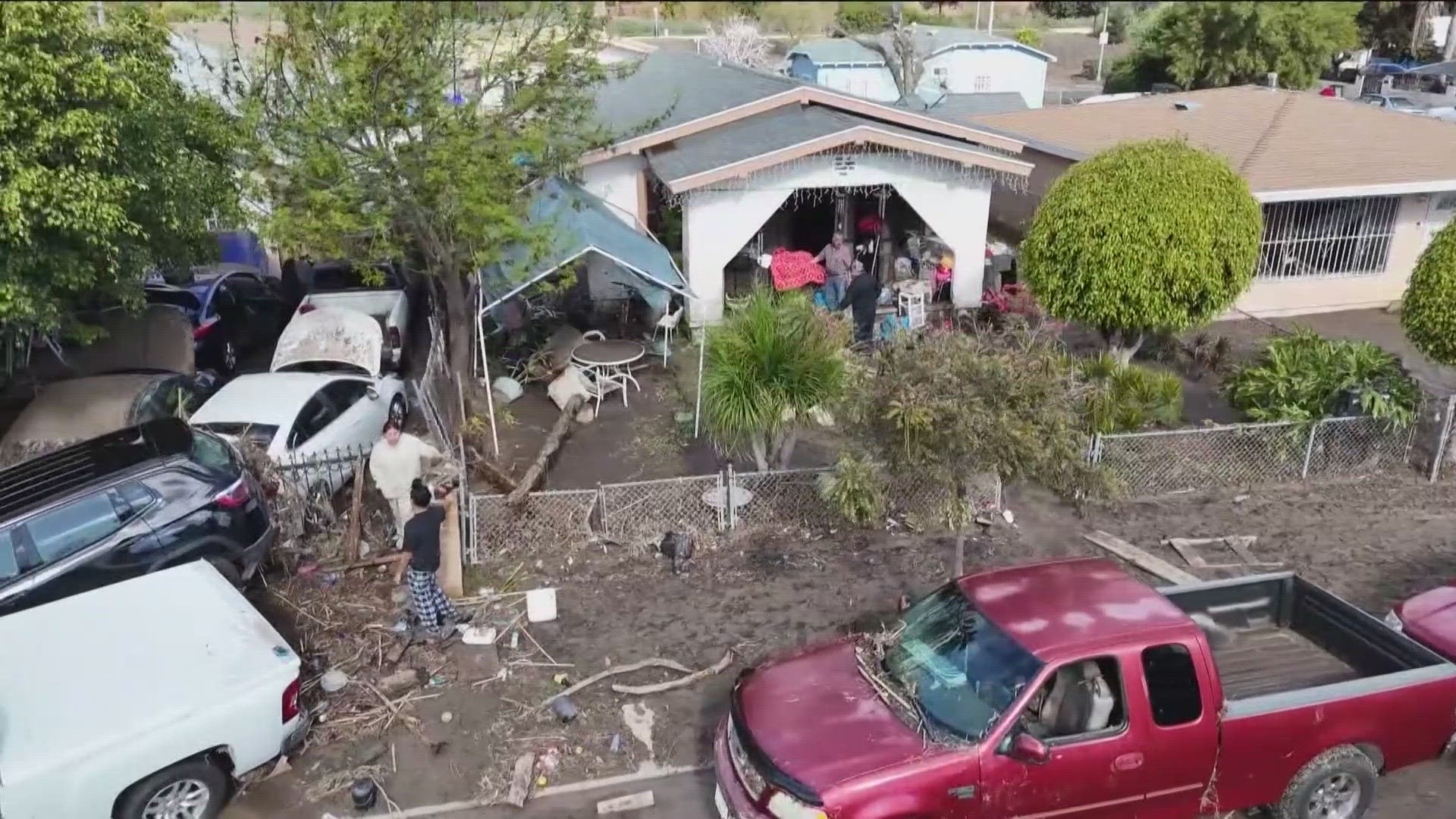SAN DIEGO — As people continue dealing with flood damage, many are finding out what’s not covered by insurance policies when it’s too late. CBS 8 is Working for You to help navigate your insurance coverage.
“I was actually in knee-deep water when I was on the phone with my insurance company when they told me that they didn’t cover anything,” said Stacey Crawford, whose home on South 42nd Street flooded when the Chollas Creek stormwater channel overflowed on January 22.
“I asked them to check if there was any kind of coverage whatsoever and they basically said, ‘Well, if it’s a busted water pipe, you’re covered and I was like, ‘No, a little bit more than that.’”
That day Crawford found out the same thing a lot of people have been finding out during the aftermath, that insurance coverage for a flood disaster is not included on a typical homeowner’s policy.
“I’m not quite sure why there’s a separate policy and why it’s not included in homeowner’s insurance, at least something,” said Crawford. “I mean, many not the entire thing, but at least something. You would think homeowner’s insurance would cover something, but it covers absolutely nothing.”
You can get a separate flood insurance policy through a private carrier, but if you live in a floodplain like some of the residents in Mountain View and Southcrest, it can be hard to acquire coverage. In these cases, the National Flood Insurance Program through FEMA could be your best option. They administer more than five million policies across the country.
“Insurance policies can vary substantially on how they apply to water damage, so it’s really important to review your policy language carefully including any applicable endorsements you might have related to water damage. Often you might see caps on water damage depending on that language,” said Karen Collins, Vice President of Property & Environmental at Property Casualty Insurance Association.
Flood insurance policies take thirty days to go into effect, and experts say it’s important to take that into account if setting one up before rainy season.
“We recommend you document any photos or damage via photos or video and definitely save all your receipts related to making a temporary repair,” said Collins.
If and when mold becomes an issue, how do we know that is covered?
“If mold does occur in the immediate area, such as on drywall that had water damage, the cost to remove mold may be considered part of the drywall repairs,” said Collins.
In some cases, you may need to add a specific mold remediation endorsement to your policy. The bottom line is that it’s helpful to get on the phone with your insurance carrier to go over all the details of your policy before you have an issue, so you can know what is covered and what is not.
At CBS 8, we are always Working for You and our community. This is a station promise that we will go the extra mile to solve a problem our audience can’t solve themselves. We want to hear your ideas on how we can cover and help our community. If you have a story idea, please email us at workingforyou@cbs8.com.
WATCH RELATED: Here's what you need to know about flood insurance

